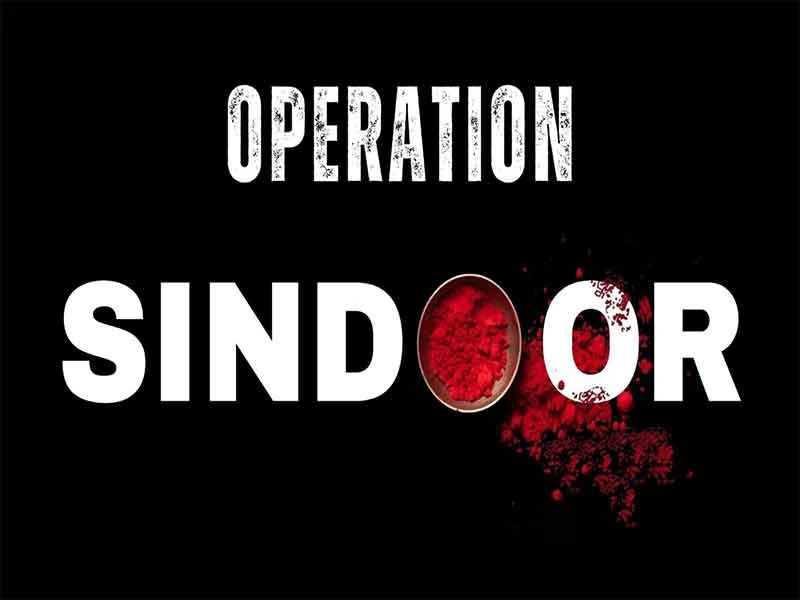
India carried out Operation Sindoor on May 7, 2025, targeting terrorist infrastructure in Pakistan and Pakistan administered Kashmir. Strikes were carried out in Nine terrorist camps associated with Jaish-e-Mohammed and Lashkar-e-Taiba in regions including Muzaffarabad, Kotli and Bahawalpur. This was in response to the terrorist attack on 22nd April 2025 in which five militants killed 26 civilians, 25 Hindu tourists and 1 Muslim civilian. Resistance front associated with Lashkar-e-Taiba had claimed responsibility for the attacks.
The attacks by the terrorists were opposed by large sections of people cutting across parties including local Kashmiris. Operation Sindoor strikes carried out in Pakistan and Pakistan occupied Kashmir were also supported. After the ceasefire, several critical questions are being raised which are yet to be answered by the Government. These relate to lapses in intelligence and security preparedness, infiltration of five heavily armed militants in a high security zone like Pahalgam, absence of security in Baisaran valley which is a tourist hotspot etc. Questions are also being raised on foreign policy failures, overreliance on personal diplomacy with leaders like Donald Trump, lack of strong condemnations and unequivocal support by United States and its other allies, inability to rally multilateral forums, lack of secure clear backing from the UN or gain traditional support from traditional partners in Europe, Gulf or Southeast Asia. Additionally, there was silence from OIC countries. Doubts were raised on India’s foreign policy which was focused heavily on optics, summits and transactional ties but lacked the strategic depth needed to mobilize global solidarity during the crisis. Doubts were raised about the effectiveness of India’s global narrative management and diplomatic preparedness.
While these questions remain unanswered, there is every effort made to gain political mileage in the name of Operation Sindoor. BJP organized events across the country in the name of ‘Sindoor Yatra.’ Notable among these was a large rally in Bhopal where 15,000 sindoori red sarees were distributed to women participants, coinciding with Prime Minister Narendra Modi’s visit and the 300th birth anniversary of Queen Ahilyabai Holkar. In Patna, Modi led a grand roadshow featuring cultural displays and tributes to the military’s efforts, while in Kolkata, the BJP’s women’s wing held a ‘Sindoor Yatra’ rally starting from the residences of Swami Vivekananda and Sister Nivedita, symbolically using colored powder to honour the dignity of Indian women and the bravery of the forces. Additionally, the BJP launched an 11-day nationwide ‘Tiranga Yatra’ in the name of spreading patriotism and celebrating Operation Sindoor’s success, engaging citizens from various regions in tricolor processions.
In an event in Rajasthan, the Prime Minister remarked ‘Sindoor flows in my veins.’ Initially there was a proposal to initiate distribution of Sindoor door-to-door from 9th June. However, following backlash, the BJP IT cell Chief refuted the claims.
Across states, the event would be used for building personal mileage of the prime minister and political mileage of BJP. In Madhya Pradesh, the BJP passed a motion of thanks to Prime Minister Modi during a major women’s rally in Bhopal. In Bihar, Modi led a grand roadshow in Patna, where 32 themed stages and a massive turnout celebrated both infrastructure development and the success of Operation Sindoor. In West Bengal, BJP state president Sukanta Majumdar referenced the operation while suggesting a political “Operation Bengal,” which drew sharp criticism from opposition parties. In Jharkhand, the party held a Tiranga Yatra in Chaibasa with patriotic slogans and public participation. Celebrations also took place in Uttar Pradesh’s Kasganj district, where BJP workers burst crackers and honoured the army. In Maharashtra’s Jalna district, sweets were distributed and crackers burst in solidarity with the armed forces.
While the tough questions remain unanswered, the BJP has adopted the strategy of 5 Ds.
Deflection
There has been an attempt to deflect public attention away from critical governance issues—such as the intelligence failure, porous security around Pahalgam, and lack of preparedness despite high alert zones. Instead of accountability and answers, spectacle has replaced substance.
Diversion
Instead of addressing foreign policy gaps—such as the absence of international solidarity, muted responses from traditional allies, and diplomatic isolation—the government has diverted the discourse to emotionally charged nationalist rhetoric, avoiding deeper questions of strategic missteps.
De-politicisation of Opposition
By monopolising the narrative around patriotism and national security, the ruling party has attempted to delegitimize or silence opposition voices. Any critique of the government’s handling is framed as anti-national, thereby depoliticising legitimate democratic dissent.
Division
The excessive use of culturally and religiously loaded symbols like sindoor risks reinforcing majoritarian politics, alienating minorities, and deepening communal divides. What should be a unifying national response has instead become a tool of identity-based political messaging.
Dramatisation
Celebrating military operations through public rallies, sindoor yatras, fireworks, and mass distribution of red sarees has led to a theatrical presentation of a serious matter of national security. This dramatisation reduces the complexity of cross-border conflict into simplistic patriotism for mass electoral appeal.
Moreover, the Pahalgam tragedy is also being used by right-wing forces in India to fuel widespread anti-Muslim and anti-Kashmiri sentiment across the country. Social media campaigns are being used to portray Kashmiri Muslims as potential threats. This has led to targeted harassment, violence, and social ostracization of Kashmiri students, traders, and residents in various states, which can only deepen communal divides. Rather than focusing on unity and justice, these forces have politicized the attack to consolidate support by scapegoating entire communities, thereby undermining social cohesion and amplifying communal polarization.
While Operation Sindoor could have been left at the level of decisive response to terrorism, use of its symbolism for political gains and promoting politics of polarisation and hatred would do more harm than good.
Subscribe to Our Newsletter
Get the latest CounterCurrents updates delivered straight to your inbox.
T Navin is an Independent Writer













































